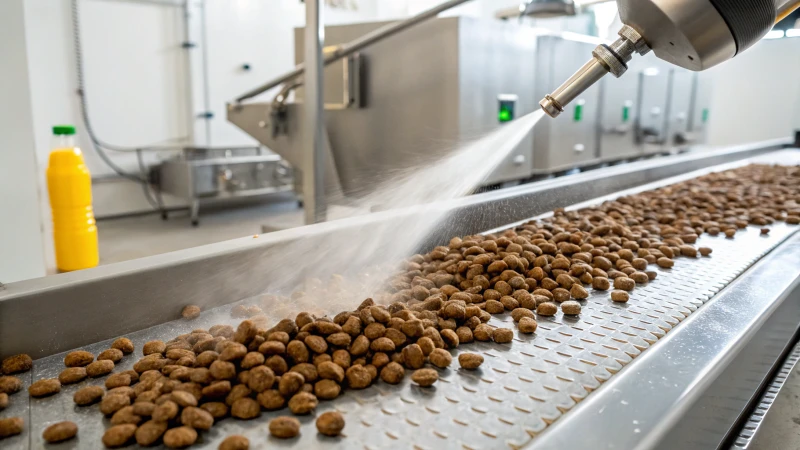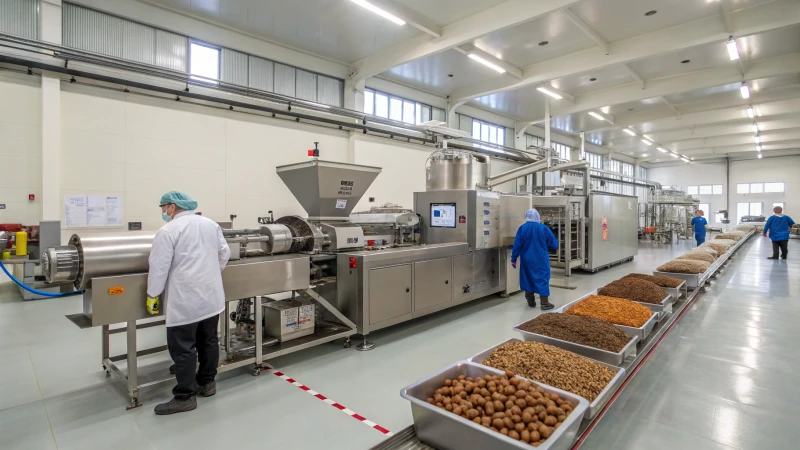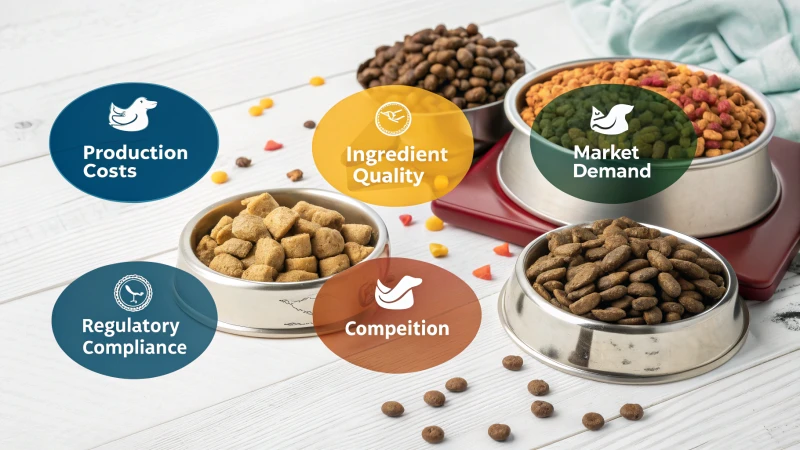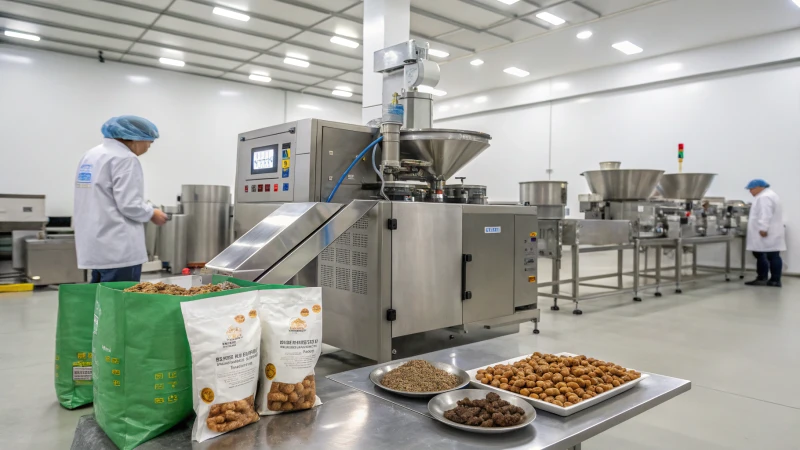
Pet owners want the best for their furry companions, but not all kibble is created equal. Poor-quality kibble can contain harmful additives, low-nutrition fillers, and even contaminants that affect pet health. Feeding substandard kibble can lead to digestive issues, allergies, and long-term deficiencies. The solution? Understanding how high-quality kibble is produced ensures you make informed choices for your pet’s diet.
How is kibble produced?
Kibble is made through a highly controlled process involving ingredient selection, grinding, mixing, extrusion, drying, coating, and packaging. High-quality kibble production ensures optimal nutrition, safety, and palatability for pets.
Why Should You Understand Kibble Production?
Knowing how kibble is made helps pet owners distinguish between nutritious options and low-quality products. Understanding the production process can also highlight the benefits of premium kibble brands over cheaper alternatives.
What Ingredients Are Used in Kibble Production?
Ingredients That Form the Basis of Kibble
Kibble production starts with selecting the right ingredients. The composition varies by brand, but most kibbles contain:
| Ingredient Type | Common Examples | Function in Kibble |
|---|---|---|
| Protein Sources | Chicken, Beef, Fish, Lamb, Plant Proteins | Essential for muscle growth and repair |
| Carbohydrates | Rice, Corn, Sweet Potatoes, Peas | Provides energy and fiber |
| Fats & Oils | Chicken Fat, Fish Oil, Flaxseed Oil | Supports skin, coat, and overall health |
| Vitamins & Minerals | Vitamin A, B, Calcium, Iron, Zinc | Promotes immune function and bone strength |
| Additives & Preservatives | Natural Antioxidants, Tocopherols | Extends shelf life and improves flavor |
Quality Control in Ingredient Selection
- Protein quality: Higher-end kibble contains real meat rather than meat by-products.
- Filler vs. Nutritional Value: Low-quality kibbles often use corn, wheat, and soy excessively.
- Artificial Additives: Some cheaper brands use artificial colors, preservatives, and flavors.
High-quality kibble uses real meat instead of meat by-products.True
Real meat provides superior protein content and digestibility compared to meat by-products.
Ingredient Sourcing and Processing
Premium pet food manufacturers source ingredients from reliable suppliers and ensure rigorous quality control before the production process begins. The ingredients undergo grinding and mixing before being processed further.

How Is Kibble Manufactured?
Step-by-Step Kibble Production Process
| Step | Process | Purpose |
|---|---|---|
| 1. Grinding | Ingredients are ground into a fine powder | Ensures consistency and digestibility |
| 2. Mixing | Ingredients are blended to create a uniform formula | Distributes nutrients evenly |
| 3. Extrusion | Mixture is cooked under high pressure and heat | Shapes and sterilizes the kibble |
| 4. Drying | Removes excess moisture | Prevents mold and spoilage |
| 5. Coating | Kibble is sprayed with fats, oils, or flavors | Enhances taste and nutritional value |
| 6. Cooling & Packaging | Final product is cooled and sealed | Ensures freshness and extends shelf life |
Extrusion: The Key Process in Kibble Production
Extrusion is a critical step where the kibble mixture is pushed through a machine under high pressure and heat, forming the final kibble shape. This process:
- Kills harmful bacteria and pathogens
- Enhances digestibility
- Creates uniform kibble shapes and sizes
Extrusion improves kibble digestibility.True
High-pressure cooking during extrusion breaks down complex carbohydrates and proteins, making them easier for pets to digest.

What Are the Differences Between Low-Quality and High-Quality Kibble?
| Feature | High-Quality Kibble | Low-Quality Kibble |
|---|---|---|
| Protein Source | Real meat, fish, eggs | Meat by-products, fillers |
| Carbohydrate Quality | Whole grains, sweet potatoes | Excessive corn, wheat, soy |
| Preservatives | Natural antioxidants | Artificial preservatives |
| Digestibility | Easily digestible | Harder to digest due to fillers |
| Nutrient Density | High nutritional value | Often lacks key vitamins and minerals |
How to Identify Quality Kibble
- Check for real meat as the first ingredient
- Avoid excessive corn, wheat, and soy
- Look for natural preservatives instead of artificial ones
Low-quality kibble contains excessive fillers.True
Fillers such as corn, wheat, and soy are often used to bulk up kibble but provide little nutritional value.

How Does Kibble Stay Fresh and Nutritious?
Packaging and Storage Methods
Kibble undergoes strict packaging protocols to maintain freshness:
- Vacuum-sealed bags prevent oxygen exposure
- Resealable packaging keeps kibble fresh after opening
- Oxygen absorbers help extend shelf life
Storage Tips for Pet Owners
To keep kibble fresh:
✅ Store in an airtight container
✅ Keep in a cool, dry place
✅ Avoid direct sunlight and humidity
How Long Does Kibble Last?
| Kibble Type | Shelf Life |
|---|---|
| Unopened Kibble | 12-24 months |
| Opened Kibble | 4-6 weeks |
Storing kibble in airtight containers extends its shelf life.True
Airtight containers prevent moisture, pests, and oxidation from degrading kibble quality.

Conclusion: Choosing the Best Kibble for Your Pet
Understanding kibble production helps pet owners make informed choices. Look for high-quality ingredients, proper processing methods, and safe storage to ensure your pet gets optimal nutrition. Avoid low-quality kibbles filled with artificial additives and fillers.
Need Expert Guidance on Kibble Production?
We specialize in high-quality kibble production Machine. Contact us today for expert advice and premium kibble options for your pet.








